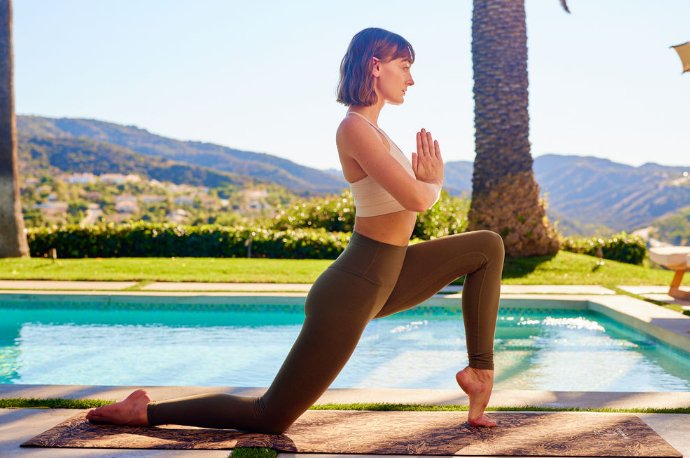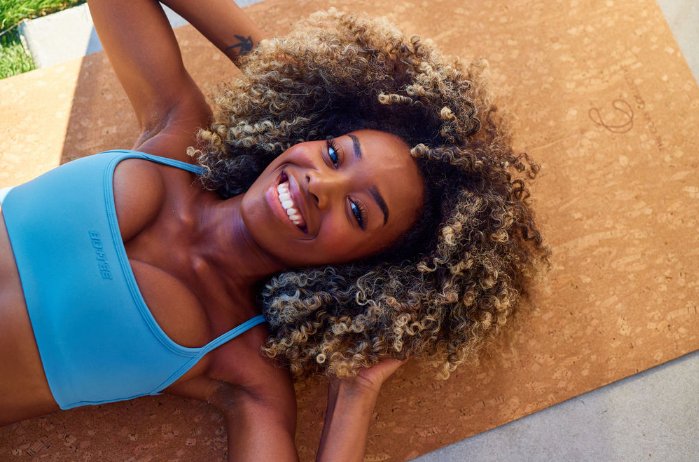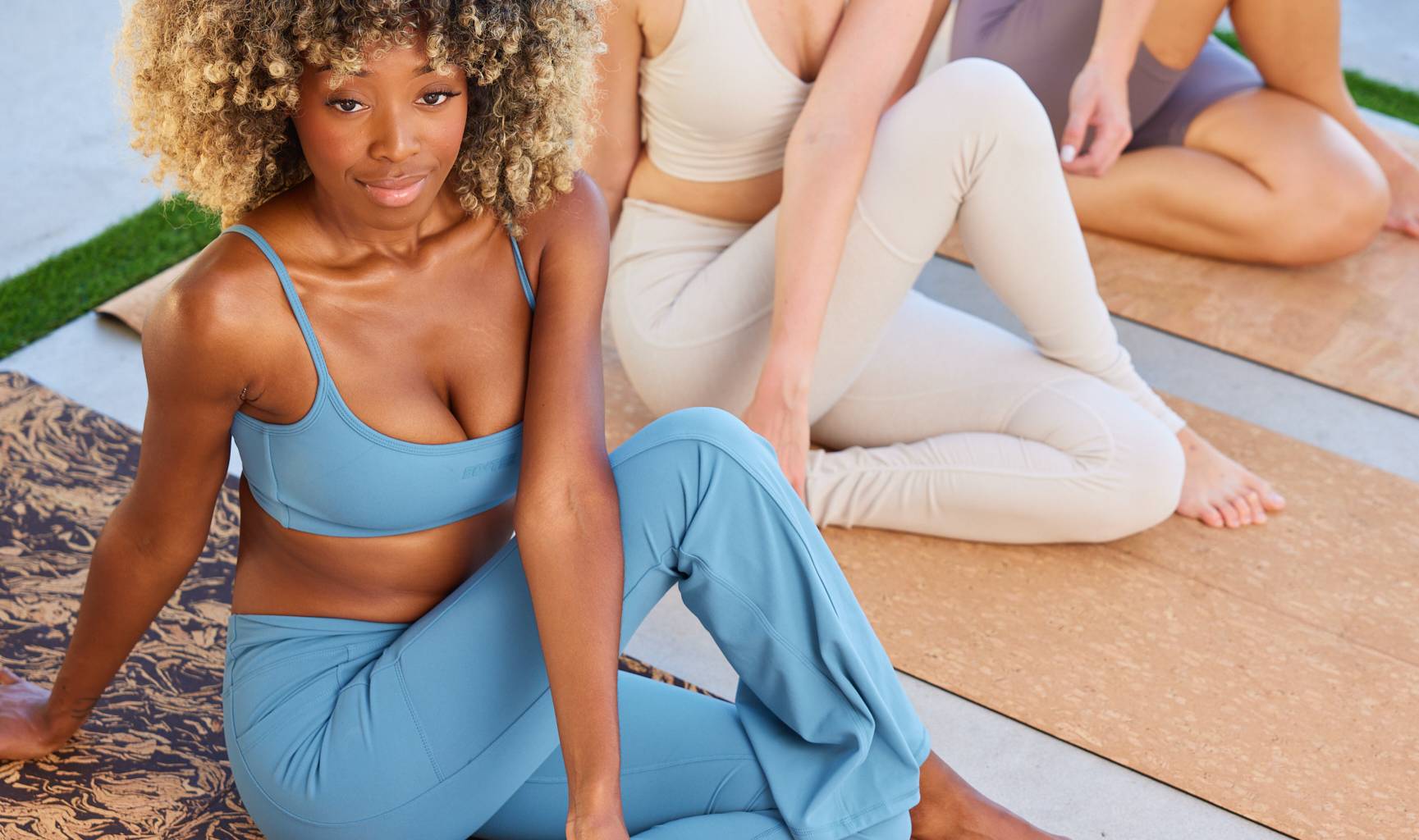Introduction:
Back pain is an extremely common ailment that affects millions of people worldwide, disrupting daily life and reducing quality of life. The ancient practice of yoga is not only a powerful tool for relaxation and stress relief, but it is also an effective way to relieve back pain. In this blog, we will explore some of the best yoga poses designed to relieve back pain, improve posture, and strengthen the spine. Whether you are an experienced yogi or a complete beginner, these yoga tips can help you reclaim your life from the clutches of back pain. So roll out your yoga mat and get ready to explore the transformative power of yoga for back pain relief!
Understanding Back Pain and Its Causes
Common Causes of Back Pain
Back pain is a common issue that affects many people at some point in their lives. Understanding the common causes of back pain can help you take proactive steps to prevent and alleviate it. Poor posture is one of the leading causes of back pain. Sitting or standing with improper alignment can put undue stress on your back muscles and spine. Muscle strain is another frequent culprit, often resulting from lifting heavy objects incorrectly or sudden movements. Additionally, a sedentary lifestyle can contribute to back pain. Lack of physical activity weakens the muscles that support the spine, leading to discomfort and pain.
How Yoga Helps Alleviate Back Pain
Yoga is an effective way to alleviate back pain due to its focus on stretching and strengthening muscles. Regular practice of yoga helps to improve flexibility and increase the range of motion in your back. This, in turn, can relieve tension and reduce pain. Yoga also enhances posture by promoting awareness of body alignment and encouraging proper positioning of the spine. Additionally, yoga involves mindfulness and breathing exercises that can reduce stress, which is often a contributing factor to back pain. By incorporating yoga into your routine, you can address the root causes of back pain and achieve long-lasting relief.
Precautions Before Starting Yoga for Back Pain
Before starting yoga for back pain, it is important to take certain precautions to ensure your safety and effectiveness of the practice. Consult your doctor to determine if yoga is appropriate for your specific condition, especially if you have a severe or chronic back issue. Start slow and listen to your body. Pushing yourself too hard can exacerbate back pain rather than relieve it. Using props such as yoga blocks, straps, and mats can provide additional support and make poses more accessible, especially if you are new to yoga or experiencing significant discomfort.Corkcollective
Essential Yoga Poses for Back Pain Relief
Cat-Cow Pose
Starting Position:
-
Begin on your hands and knees in a tabletop position.
-
Ensure your wrists are directly under your shoulders and your knees are directly under your hips.
-
Keep your spine in a neutral position, neither arched nor rounded.
Cat Pose (Marjaryasana):
-
As you exhale, round your spine towards the ceiling, tucking your tailbone and releasing your head towards the floor.
-
Engage your abdominal muscles to support the movement.
-
Imagine a cat stretching its back.
Cow Pose (Bitilasana):
-
As you inhale, arch your back, lifting your chest and tailbone towards the ceiling.
-
Allow your belly to relax towards the floor.
-
Lift your head slightly to look forward, being careful not to overextend your neck.
Flowing Between Cat and Cow:
-
Continue to move between Cat and Cow poses with each breath.
-
Exhale as you move into Cat Pose and inhale as you move into Cow Pose.
-
Repeat this flow for several breaths, moving smoothly and gently.
The benefits of Cat-Cow Pose include improved spinal flexibility and the release of tension in the back muscles.
Downward-Facing Dog Pose
Starting Position:
-
Begin on your hands and knees in a tabletop position.
-
Place your wrists directly under your shoulders and your knees directly under your hips.
-
Spread your fingers wide and press firmly into your palms.
Tuck Your Toes:
-
Tuck your toes under, preparing to lift your knees off the floor.
Lift Your Hips:
-
As you exhale, lift your knees off the floor, straightening your legs as much as possible.
-
Raise your hips towards the ceiling, forming an inverted V shape with your body.
Align Your Body:
-
Keep your arms straight, but do not lock your elbows.
-
Press your chest towards your thighs, trying to bring your ears in line with your upper arms.
-
Ensure your head is between your upper arms, and your gaze is towards your knees or navel.
Feet and Legs:
-
Keep your feet hip-width apart and parallel to each other.
-
Press your heels towards the floor, but it's okay if they don't touch the ground.
-
Engage your quadriceps to help lift your hips higher.
Maintain the Pose:
-
Hold the pose for several breaths, maintaining steady and deep breathing.
-
Distribute your weight evenly between your hands and feet.
Return to Starting Position:
-
To come out of the pose, gently lower your knees back to the floor into the tabletop position.
The benefits of Downward Facing Dog include improved posture, increased strength, and enhanced flexibility in the back and shoulders.
Bridge Pose
Starting Position:
-
Lie on your back on a yoga mat.
-
Bend your knees and place your feet flat on the floor, hip-width apart.
-
Position your heels as close to your sitting bones as possible.
Position Your Arms:
-
Rest your arms alongside your body with your palms facing down.
-
Ensure your fingertips are lightly touching the backs of your heels.
Prepare for Lift:
-
Press your feet and arms firmly into the floor.
-
Engage your core and glutes to prepare for the lift.
Lift Your Hips:
-
As you inhale, press into your feet and lift your hips towards the ceiling.
-
Roll your shoulders underneath you to open your chest further.
-
Keep your thighs and feet parallel, avoiding splaying your knees outward.
Interlace Your Hands (Optional):
-
If comfortable, interlace your fingers beneath your back and straighten your arms.
-
This can help lift your chest higher and open your shoulders more.
Align Your Body:
-
Ensure your knees are directly over your heels.
-
Keep your neck in a neutral position, avoiding turning your head side to side.
-
Lift your chest towards your chin while keeping space between your chin and chest.
Hold the Pose:
-
Hold the pose for 30 seconds to 1 minute, maintaining steady and deep breathing.
-
Focus on lifting your hips higher with each inhale.
Release the Pose:
-
To release, unclasp your hands if they are interlaced.
-
Slowly lower your hips back to the floor as you exhale.
-
Rest in a neutral position with your back flat on the mat.
The benefits of Bridge Pose include strengthening the lower back, glutes, and hamstrings, as well as improving spinal alignment and flexibility.
Sphinx Pose
Starting Position:
-
Lie face down on your yoga mat with your legs extended straight back.
-
Allow your feet to be hip-width apart, with the tops of your feet pressing gently into the mat.
Position Your Arms:
-
Bend your elbows and place your forearms on the mat, parallel to each other.
-
Align your elbows directly under your shoulders, with your forearms and palms flat on the mat.
Engage Your Core:
-
Gently engage your core muscles to support your lower back.
-
Press your pubic bone into the mat to lengthen your lower back.
Lift Your Chest:
-
On an inhale, lift your upper torso and head off the mat, using the strength of your back muscles.
-
Press firmly into your forearms to lift your chest higher, opening through your heart and shoulders.
-
Keep your elbows directly under your shoulders and your neck in a neutral position, gazing forward or slightly upward.
Maintain the Pose:
-
Hold the pose for 5 to 10 breaths, breathing deeply and evenly.
-
Focus on maintaining length in your spine and openness in your chest.
Release the Pose:
-
To release, gently lower your torso and head back to the mat.
-
Rest your forehead on your hands or turn your head to one side, allowing your back to relax.
By incorporating Sphinx Pose into your yoga practice, you can enjoy a gentle yet effective way to alleviate back pain, improve spinal health, and promote relaxation.
Locust Pose
Starting Position:
-
Lie face down on your yoga mat with your legs extended straight back.
-
Allow your arms to rest alongside your body, palms facing up.
-
Place your forehead on the mat, and keep your neck in a neutral position.
Engage Your Core and Legs:
-
Gently engage your core muscles to support your lower back.
-
Activate your leg muscles, pressing your thighs and the tops of your feet firmly into the mat.
Lift Your Upper Body:
-
On an inhale, lift your head, chest, and arms off the mat.
-
Keep your arms parallel to the floor, extending them backward and reaching through your fingertips.
-
Lift your chest by engaging your back muscles, keeping your gaze slightly forward or downward to avoid neck strain.
Lift Your Legs:
-
Simultaneously lift your legs off the mat, keeping them straight and engaged.
-
Ensure your legs are together or slightly apart, depending on your comfort and flexibility.
-
Keep your inner thighs rotating slightly toward each other to protect your lower back.
Hold the Pose:
-
Hold the pose for 5 to 10 breaths, maintaining steady and deep breathing.
-
Focus on lengthening your body from head to toes, keeping your spine extended.
Release the Pose:
-
To release, exhale and slowly lower your chest, head, arms, and legs back to the mat.
-
Turn your head to one side and rest your arms alongside your body, allowing your back to relax.
By practicing Locust Pose regularly, you can strengthen your back, improve posture, increase spinal flexibility, and reduce back pain.
Tips for Integrating Yoga into Your Daily Routine
Creating a Consistent Yoga Practice
Creating a consistent yoga practice is key to experiencing the benefits of yoga for back pain. Set a regular schedule that fits into your daily routine, whether it's morning, afternoon, or evening. Consistency is more important than duration; even a short daily practice can yield significant results over time. Finding a yoga community, either in-person or online, can provide motivation and support, making it easier to stick to your practice. Engaging with others who share similar goals can enhance your yoga experience and keep you committed to your routine.
Complementing Yoga with Other Healthy Habits
To maximize the benefits of yoga for back pain, complement your practice with other healthy habits. Proper nutrition and hydration are essential for overall health and can support your body's healing process. Ensure you are consuming a balanced diet rich in nutrients that promote muscle and bone health. Regular physical activity, in addition to yoga, can further strengthen your back and improve your overall fitness. Incorporating these healthy habits into your lifestyle can enhance the effectiveness of yoga and contribute to lasting back pain relief.
By following these yoga secrets and incorporating these poses into your routine, you can effectively manage and alleviate back pain, leading to a healthier and more comfortable life.
Conclusion:
Back pain can be debilitating, but with the right approach, it doesn’t have to be a permanent part of your life. Yoga offers a comprehensive and effective solution for back pain relief by stretching, strengthening, and improving the flexibility of your back muscles. By incorporating the poses mentioned above into your daily routine, you can experience significant relief and enjoy a more comfortable, active lifestyle.
Remember to start slowly, listen to your body, and use props as needed to ensure safe practice. By combining these yoga poses with other healthy habits, such as proper nutrition and regular physical activity, you can enhance the benefits and achieve lasting back pain relief.
Ready to start your journey towards a pain-free life? Visit our store and get a 15% discount on all yoga mats and accessories with the code BestCorkYogaMat. Don’t wait—take the first step today and discover the transformative power of yoga for back pain relief. Happy stretching!





Leave a comment
This site is protected by hCaptcha and the hCaptcha Privacy Policy and Terms of Service apply.